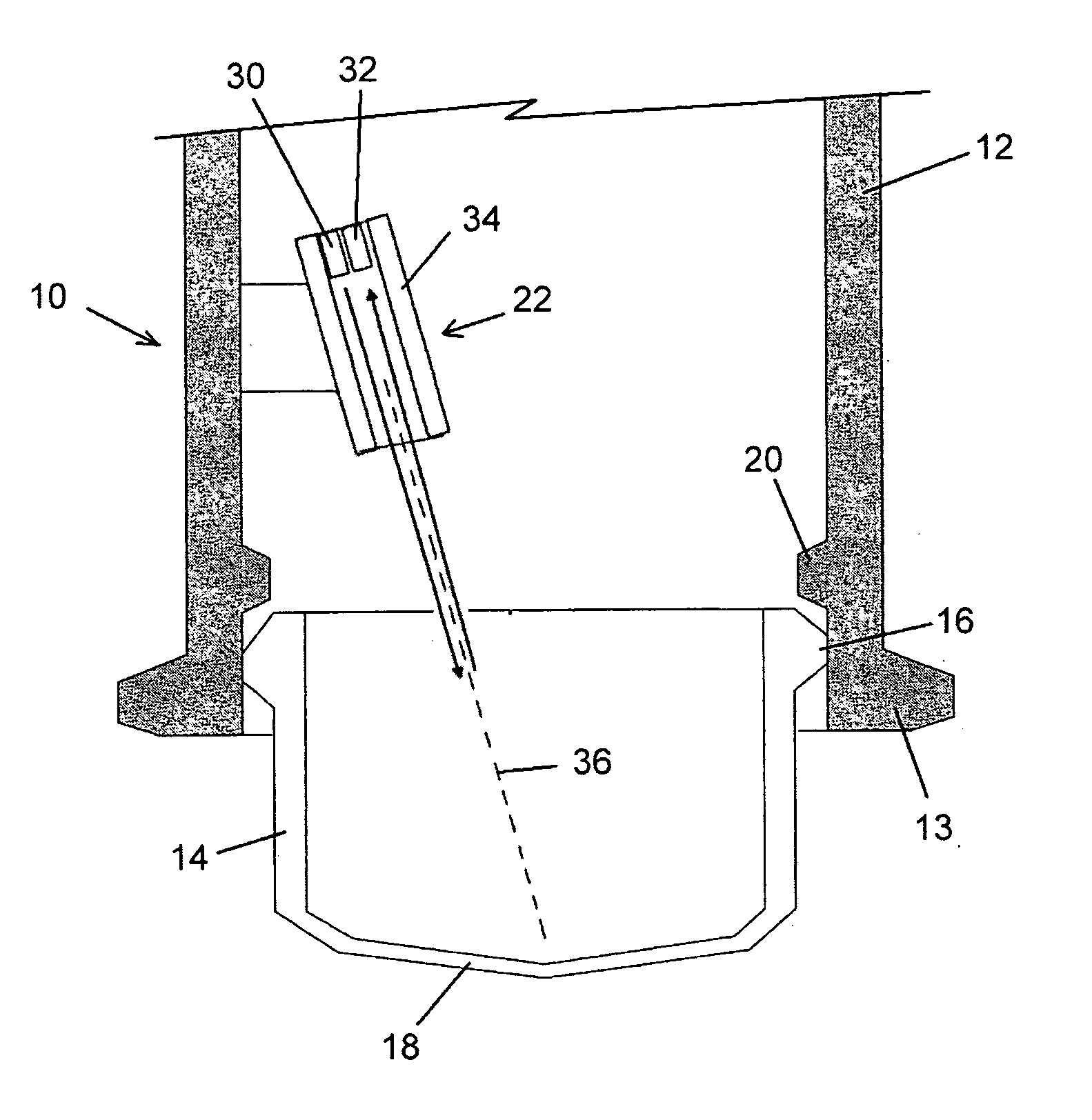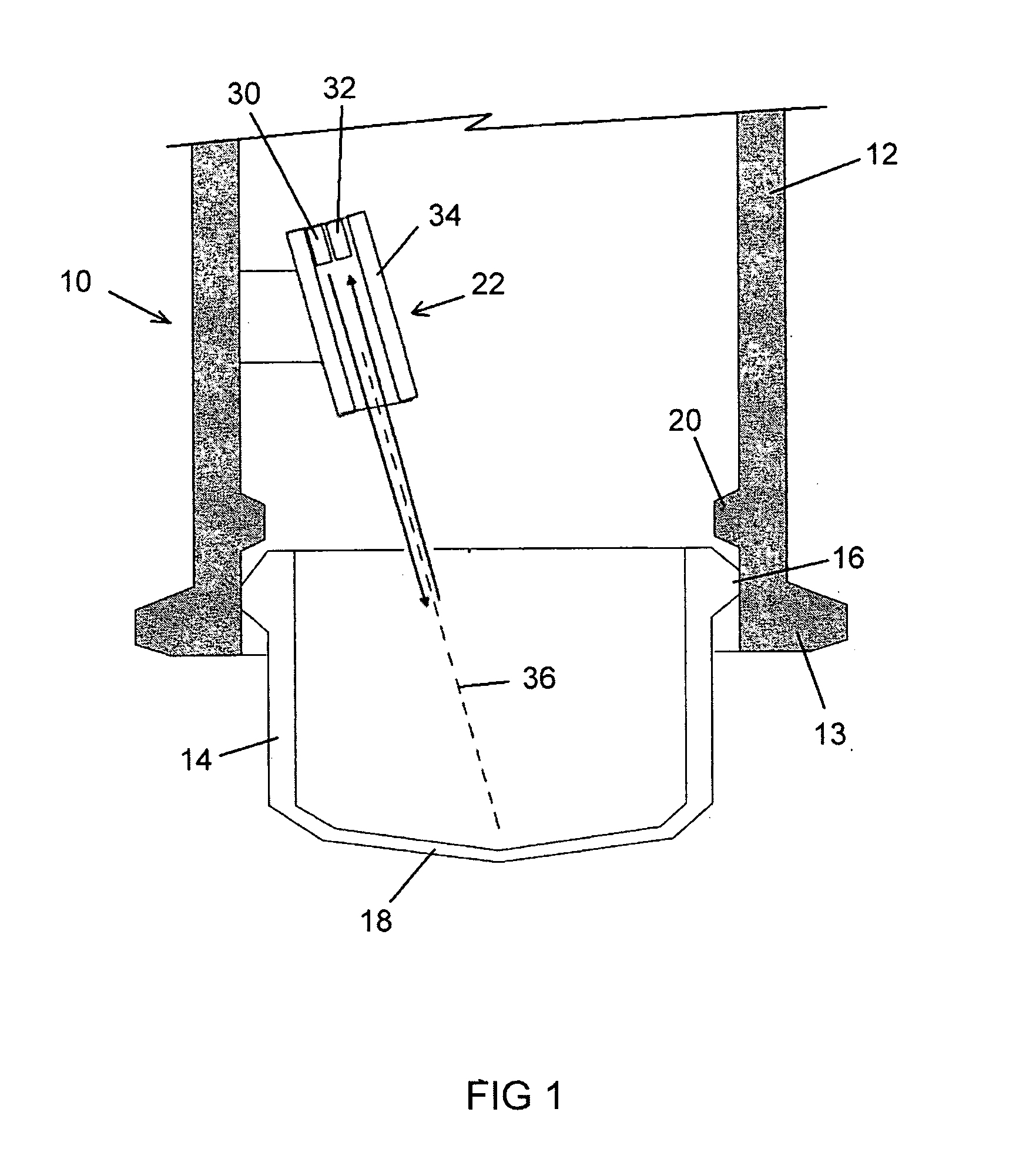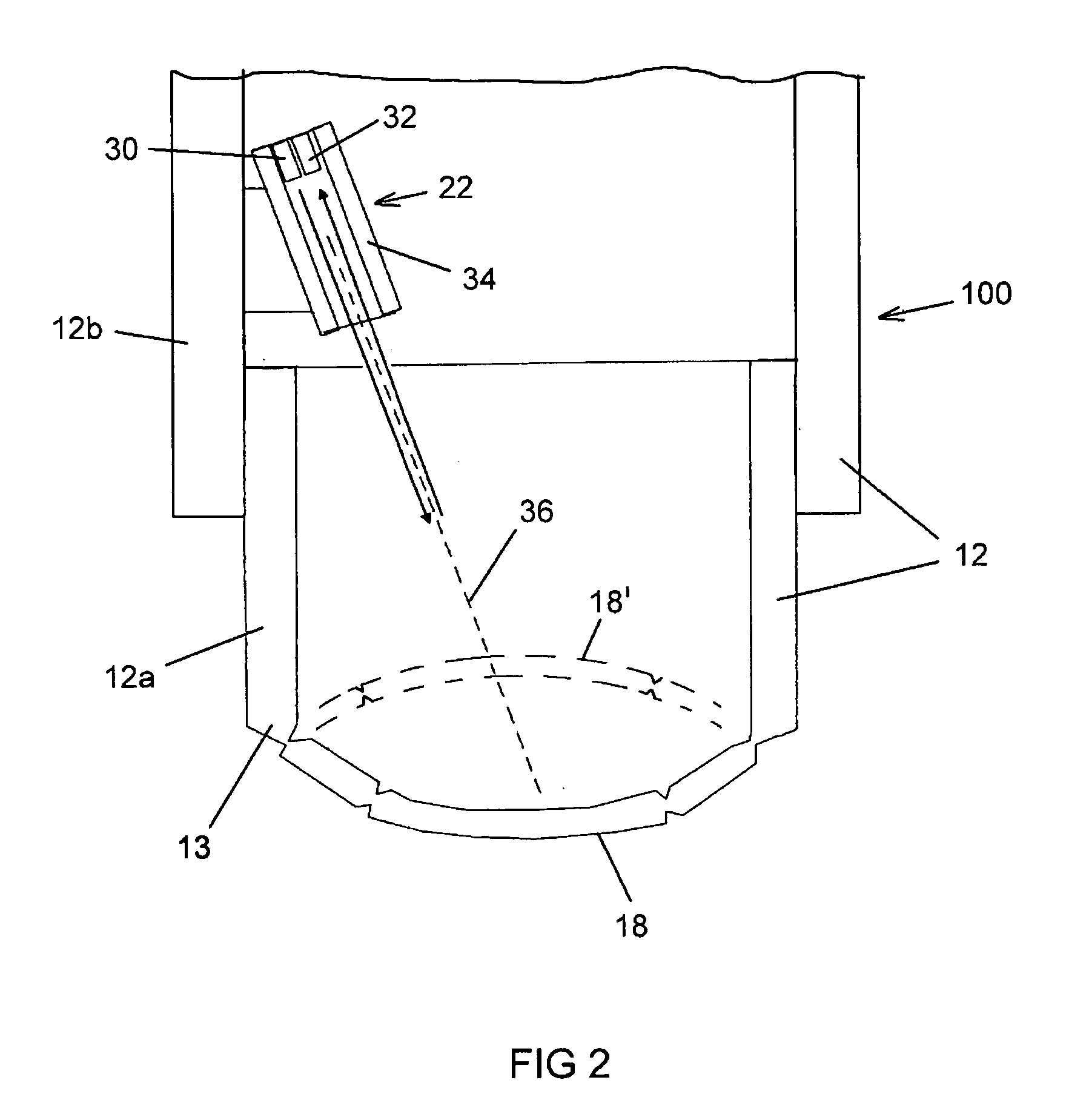Blanching Device for Use in Evaluating Skin Condition
- Summary
- Abstract
- Description
- Claims
- Application Information
AI Technical Summary
Benefits of technology
Problems solved by technology
Method used
Image
Examples
Embodiment Construction
[0053]Referring to FIG. 1, a blanching device 10 comprises a transparent cap 14 supported at the lower end of a hollow opaque shroud 12. The cap 14 has an annular collar 16 which engages the interior walls of the shroud 16 with just sufficient friction to retain the cap in place. The lowest part of the cap 14 forms a window 18 whose outer surface has a generally convex, i.e. outwardly and downwardly bulging, shape.
[0054]The shroud 12, of which only the bottom part is shown, serves as a handle which allows the window 18 to be pressed downwardly against a patient's skin (not shown) either manually or using an instrument. When such pressure is first applied, retraction of the cap 14 upwardly into the shroud 12 is resisted by the collar 16 which meets an annular detente 20 on the interior wall of the shroud. This allows the window 18 to be pressed firmly against the skin to blanch the skin under the window.
[0055]However, when the pressure of the window 18 on the skin reaches a pre-deter...
PUM
 Login to View More
Login to View More Abstract
Description
Claims
Application Information
 Login to View More
Login to View More - R&D
- Intellectual Property
- Life Sciences
- Materials
- Tech Scout
- Unparalleled Data Quality
- Higher Quality Content
- 60% Fewer Hallucinations
Browse by: Latest US Patents, China's latest patents, Technical Efficacy Thesaurus, Application Domain, Technology Topic, Popular Technical Reports.
© 2025 PatSnap. All rights reserved.Legal|Privacy policy|Modern Slavery Act Transparency Statement|Sitemap|About US| Contact US: help@patsnap.com



